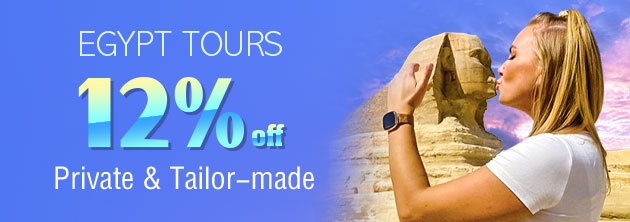Temple of Kalabsha
One of the most impressive Ptolemaic and Roman structures of Aswan is Kalabsha Temple. Upon discovery by Swiss traveler Burckhardt, this was considered 'amongst the most precious remains of Egyptian antiquity'. Temple of Kalabsha is usually the first stop for any cruise sailing on Lake Nasser.Relocation of Monuments
After the High Dam was constructed at Aswan, a number of historical monuments had to be moved to an island near Aswan which is called new Kalabsha. Of them, the most significant and widely visited monument is the Temple of Kalabsha which was reconstructed by the archaeologists. The temple is dedicated to the Nubian God Mandaulis. It measures 74 meters (243 ft.) from the pylon to the rear wall and is about 33 meters (108 ft.) in width. It is the largest free standing Temple of the Nubia in Egypt.In the interior, you will find only three rooms which are entirely decorated and has an inscription from Silko, famous Nubian ruler. The inscription speaks about the rise of Christianity in the area during the sixth century AD. Apart from the Temple of Kalabsha, you will find other monuments like Temple of Beit el-wali and Gerf Hussain. Both the monuments were created during the time of Ramses II. The Roman Kiosk of Qertassi and the chapel of Dedwen are the other attractions in the island.
The West German team dismantled the original temple of Kalabsha and the 13,000 blocks of sand stones were reconstructed at the new Kalabsha Island between 1961 and 1963.
The History of The Temple
Situated about 50 kilometers (31 mi) to the south of ancient Talmis, which has now submerged, the Temple of Kalabsha is one of the finest Egyptian structures. Nile River used to flow on both the sides of Talmis and when with time the river narrowed, the place was renamed as Bab el Kalabsha, or the gate of Kalabsha.The structure was built during the era of Augustus, popular Roman Empire of the last century BC. It is presumed that the temple was constructed on an existing temple from the 18th dynasty as depicted by Amenophis II which you can see in the pillared hall. Also, black granite statue of Tuthmosis III discovered in the nearby river bank belonging to the last century affirms the fact that there was an existing Temple before the Temple of Kalabsha was constructed.
Emperor Gaius who was also known as Caligula made more additions to this Temple during his reign in 37 to 41 AD; and, Emperor Trajan during AD 98-117 also continued with some more additions.
Structure of the Temple
There are prominent relief decorations on many parts of the temple but they are not completed except for the ones that you find in the innermost chambers. Relief of falcons are found in different figures and sizes all across the temple. The most impressive part is the pylon that is on the east-west axis of the temple. It is also the doorway and is well preserved but the cornice has been destructed. The doorway is the most decorated part of the temple and you can find a sun disk with wings above it.On the right side of the entrance, there is a relief showing Emperor Augustus in front of Horus. Some Coptic Graffiti which can be seen as you cross the doorway indicates that the temple was later used as a church.
The construction of the temple follows standard plan which has a monumental pylon that opens into a hypostyle hall that is a pillared hall and vestibules before the sanctuary. There are 14 columns on the open court of the Temple of Kalabsha but you can only find the columns in the north and the southern sides in their original height. They are typical examples of the pillars found in the Greco-Roman period.
Nilometer
On the southern side of this corridor, there is a nilometer which was used to calculate the water level and understand the rise in the river Nile and predict the flood in the summertime.Other Minor Monuments
As you go past the temple, on the Southwest side is a chapel that has small rock cut chambers enclosed by a forecourt which is constructed of granite pillars. Here also, the doorway is decorated and you can find relief of pharaohs in a scene offering worship to Nubian God Dedwen. It is presumed that the chapel was constructed of mud brick and served as a birth house of the Egyptians.On the northeast side of the temple, there is an unfinished Chapel belonging to the Ptolemaic Period and it is basically older than the larger temple. The exterior has no decorations but inside you can find relief with scenes of a king offering to the triad of elephant time Satis, Khum and Anukis along with Isis, Osiris and Horus.
Psammetichus II of the 26th dynasty created a Granite stela which you can find on the Northern side of the temple of Kalabsha. It was created to mark the successful Nubian campaign in 593 BC. There are many Prehistoric petroglyphs from 5000 to 3000 BC with reliefs of elephants and gazelle.
How to Reach
Aswan to Kalabsha Temple distance - 34 min (19.2 km) via Al Sad Al Aali. It takes around 30 minutes to reach by taxi and can cost about 90 LE. However, be ready if the driver asks for tips.
Read more about Aswan Transportation
Ticket & Timings
Kalabsha Temple opening hours: 9 AM - 5 PMPhotography allowed
Entry fee: 3 £
Read more about 5 Most Famous Temples in Aswan

